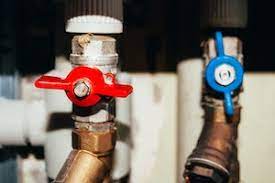In the intricate world of plumbing, there’s a small yet mighty hero that often goes unnoticed – the toilet shut-off valve. This unassuming valve plays a pivotal role in controlling water flow to your toilet, ensuring proper operation and preventing potential disasters. In this blog, we’ll dive deep into the significance of the toilet shut-off valve, how it operates, maintenance tips, and why understanding it is essential for every homeowner.
The Role of the Toilet Shut-Off Valve: Think of the toilet shut-off valve as the gatekeeper of your bathroom’s water supply. It allows you to control the flow of water to your toilet, making it a critical tool for various situations. Whether you need to perform repairs, replace a faulty component, or simply shut off water to prevent leaks, this valve is your go-to solution.
How the Toilet Shut-Off Valve Works: The toilet shut-off valve is typically located on the water supply line leading to the toilet tank. It’s a simple quarter-turn valve that you can easily operate by hand. Turning it clockwise shuts off the water flow, while turning it counterclockwise restores the flow. This straightforward mechanism empowers you to control water flow to the toilet without needing any special tools or equipment.
Locating the Toilet Shut-Off Valve: To find the toilet shut-off valve, follow the water supply line from the toilet tank back towards the wall or floor. The valve is usually situated along this line and may be a small knob or lever. Familiarizing yourself with its location is essential for quick access during emergencies or routine maintenance.
Maintenance and Care: While the toilet shut-off valve is relatively simple, it still requires occasional attention to ensure it functions properly when needed. Here are some maintenance tips:
- Regular Testing: Periodically turn the valve off and on to ensure smooth operation. This action prevents the valve from seizing up due to lack of use.
- Lubrication: Apply a silicone-based lubricant to the valve’s threads to prevent rust and make turning the valve easier.
- Inspection: Check for leaks around the valve. If you notice any dripping, it might be time to replace the valve or its associated components.
Replacing a Faulty Toilet Shut-Off Valve: If you encounter a toilet shut-off valve that’s leaking, corroded, or difficult to turn, it’s wise to replace it promptly. A malfunctioning valve can escalate into more significant plumbing issues if left unattended. Consult a professional plumber if you’re unsure about the replacement process.
